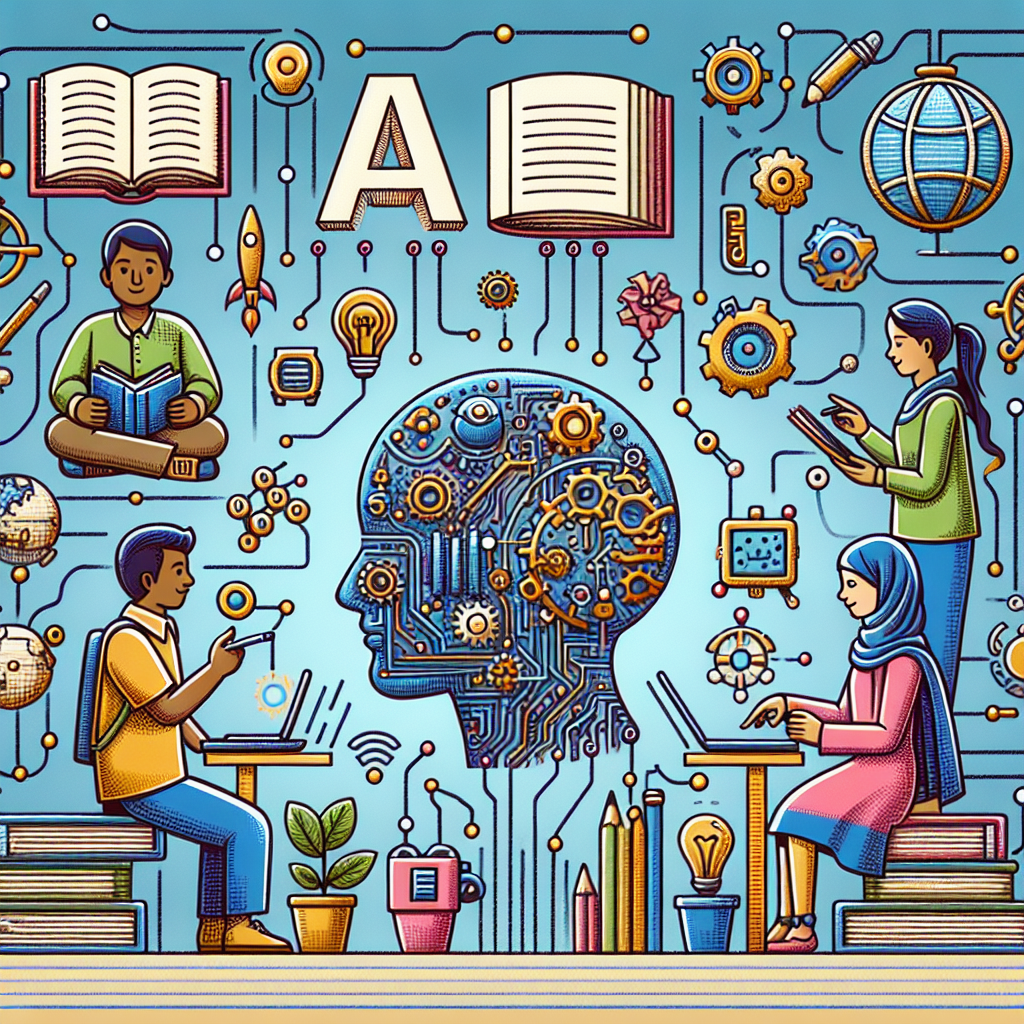In recent years, artificial intelligence (AI) has been increasingly utilized in a wide range of industries, including education. One of the most exciting applications of AI in the education sector is the creation of interactive learning experiences. By leveraging AI technology, educators and developers are able to design personalized, engaging, and effective learning experiences for students of all ages.
Interactive learning experiences refer to educational activities that actively engage students in the learning process, allowing them to interact with the content and receive real-time feedback. These experiences can take various forms, such as educational games, simulations, virtual reality environments, and chatbots. AI plays a crucial role in enhancing the interactivity and personalization of these learning experiences, making them more engaging and effective for learners.
There are several ways in which AI can be used to create interactive learning experiences:
Personalization: AI algorithms can analyze student data, such as learning preferences, strengths, and weaknesses, to personalize the learning experience for each individual student. By tailoring the content and activities to suit the needs of each student, AI helps to ensure that learners are more engaged and motivated to learn.
Adaptive learning: AI-powered adaptive learning platforms can dynamically adjust the difficulty level of the content based on the student’s performance. This allows students to progress at their own pace and receive targeted support in areas where they may be struggling. Adaptive learning systems can also provide real-time feedback to help students improve their understanding of the material.
Natural language processing: AI-powered chatbots and virtual assistants can interact with students in natural language, providing them with instant answers to their questions and helping them navigate through the learning material. These conversational interfaces make the learning experience more interactive and engaging for students.
Gamification: AI can be used to create educational games and simulations that motivate students to learn through challenges, rewards, and competition. Gamification elements, such as leaderboards, badges, and points, can make learning more enjoyable and encourage students to stay engaged with the material.
Virtual reality: AI-powered virtual reality (VR) environments can simulate real-world scenarios and provide students with immersive learning experiences. VR technology allows students to interact with the content in a more hands-on and experiential way, making learning more engaging and memorable.
Overall, the integration of AI into interactive learning experiences has the potential to revolutionize the way we teach and learn. By harnessing the power of AI, educators can create more personalized, engaging, and effective learning experiences that cater to the diverse needs of today’s learners.
FAQs:
Q: How can AI enhance the personalization of interactive learning experiences?
A: AI algorithms can analyze student data to identify their learning preferences, strengths, and weaknesses, and tailor the content and activities to suit their individual needs. This personalization helps to ensure that students are more engaged and motivated to learn.
Q: What are the benefits of using AI in adaptive learning?
A: AI-powered adaptive learning platforms can dynamically adjust the difficulty level of the content based on the student’s performance, allowing students to progress at their own pace and receive targeted support in areas where they may be struggling. This personalized approach helps students improve their understanding of the material.
Q: How can AI-powered chatbots enhance the interactivity of learning experiences?
A: AI-powered chatbots and virtual assistants can interact with students in natural language, providing them with instant answers to their questions and helping them navigate through the learning material. These conversational interfaces make the learning experience more interactive and engaging for students.
Q: What role does gamification play in interactive learning experiences?
A: AI can be used to create educational games and simulations that motivate students to learn through challenges, rewards, and competition. Gamification elements, such as leaderboards, badges, and points, can make learning more enjoyable and encourage students to stay engaged with the material.
Q: How can AI-powered virtual reality environments enhance the learning experience?
A: AI-powered virtual reality (VR) environments can simulate real-world scenarios and provide students with immersive learning experiences. VR technology allows students to interact with the content in a more hands-on and experiential way, making learning more engaging and memorable.

